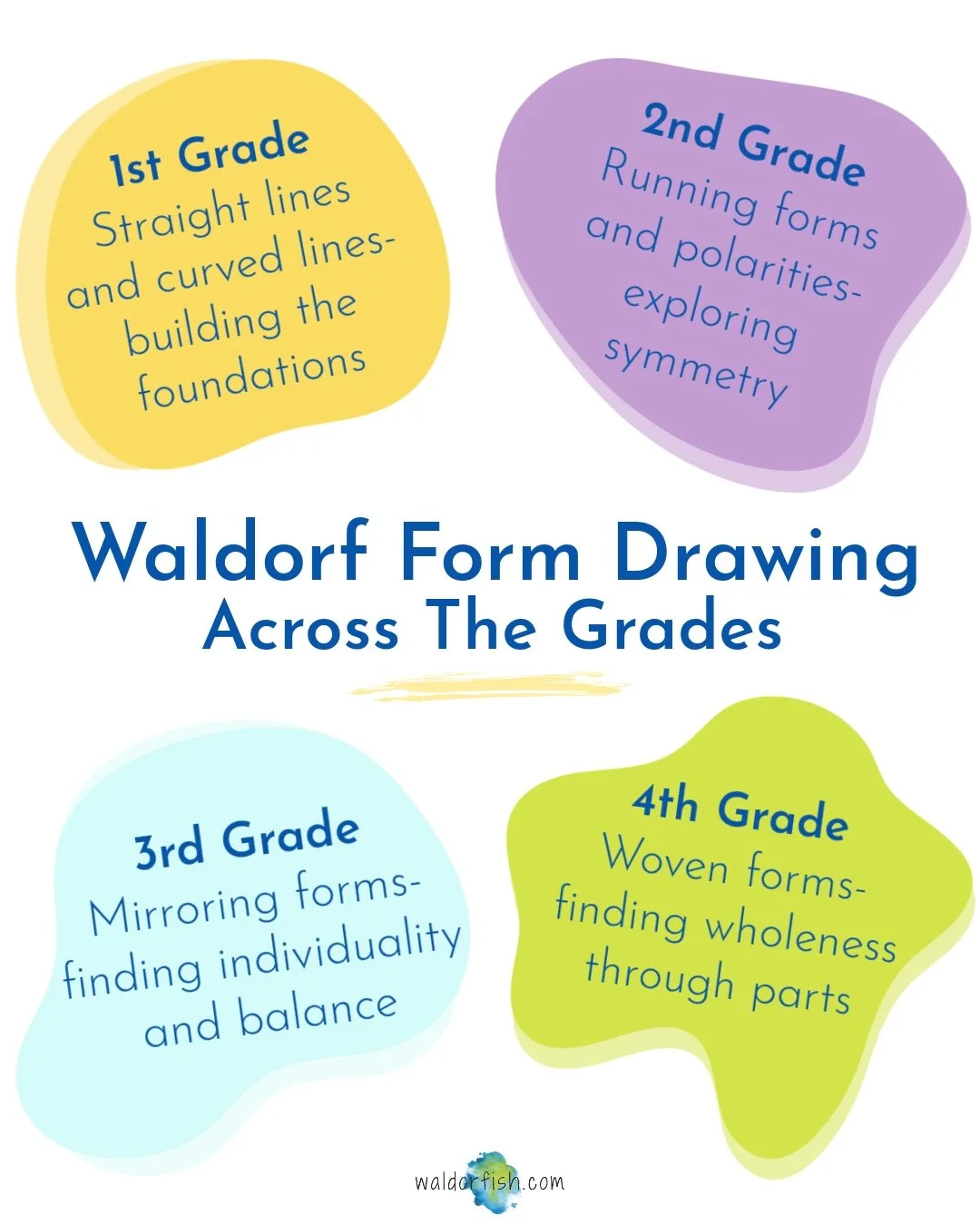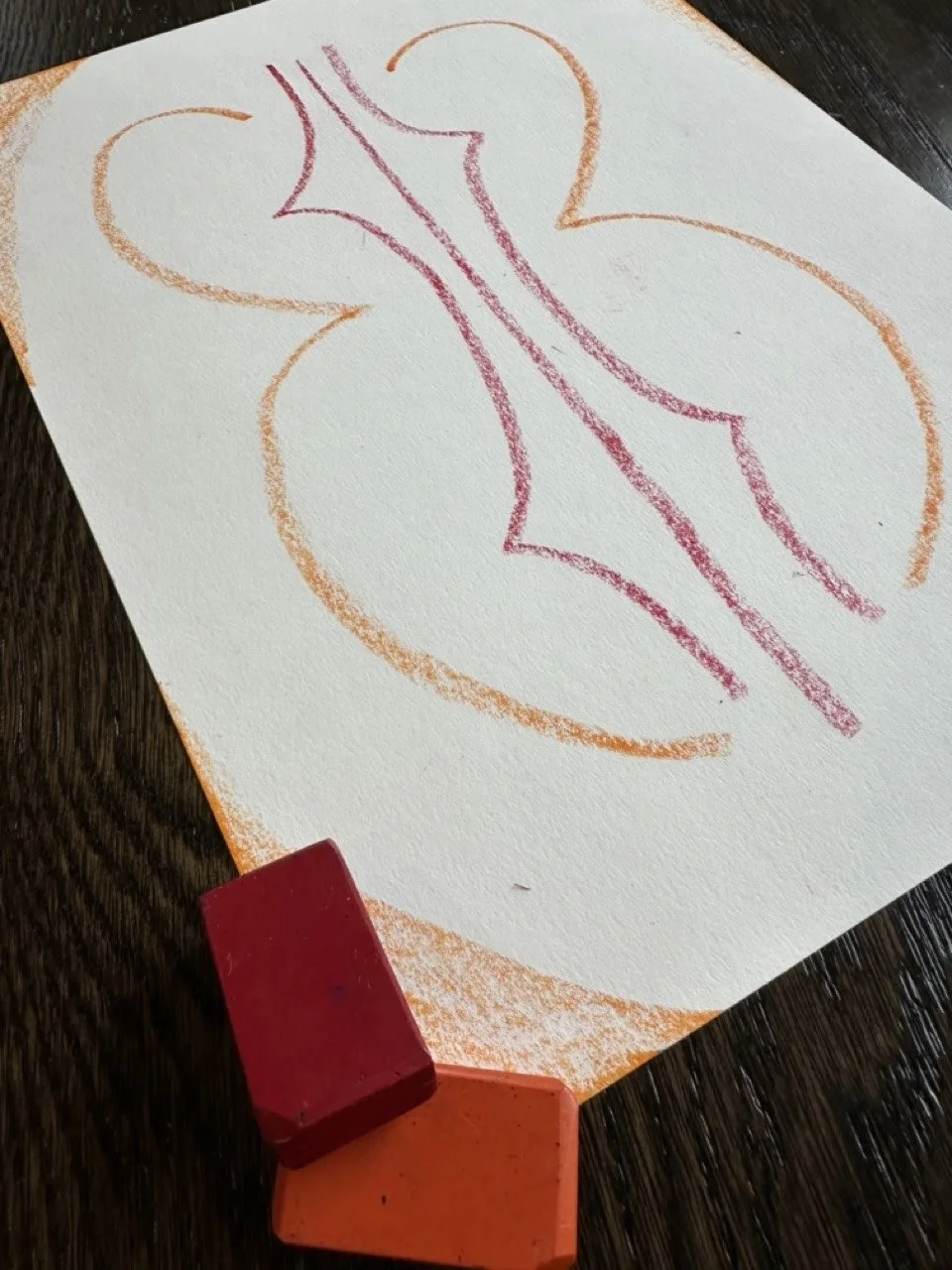Waldorf Form Drawing: How the Forms Progress Through Grades 1-4
Waldorf form drawing curriculum progresses across the grades, and evolves to meet the growing child in their development.
So, how do the forms change from first through fourth grade?
In first grade, the curriculum starts at the beginning! First graders begin their journey by exploring the most basic, yet universal forms in our world: straight lines and curved lines. From drawing curves in the playground sandbox with their feet, to drawing straight lines on the chalkboard with colorful chalk, the first grader begins to explore the foundations of their surroundings through form drawing.
With form drawing, practice is far more important than the result!
The second grader is entering a new realm of development, and is ready to explore polarities: darkness and light, the heavens and earth, good and evil. They are beginning to notice balance, or lack thereof, and are growing in their ability to draw and create. The form drawing curriculum includes the practice of drawing running forms, such as a wave drawn over and over again, as the child strives to keep the shape symmetrical, the same size, and balanced. These forms themselves reflect the polarities of shapes as well; strong, straight lines, or curved, circular forms, the second grader’s form drawing curriculum emphasizes finding balance and symmetry.
In Waldorf form drawing, the forms are designed to meet the inner needs and experiences of the growing child!
Third grade marks a great change in the child, as they are beginning to see themselves as separate from the group; they are finding their individuality, which can be an exciting and isolating experience all at once! Hence, the third grade form drawing curriculum works with mirror forms. These are more complex, and require more abstract thought than ever before. At this stage, it isn’t about copying the form, but instead, transforming it to a whole different point of view. Through this process, the third grader is encouraged to appreciate the form in its original state, and then make it their own through the process of form drawing.
Fourth grade is the final year of form drawing curriculum before students formally enter the world of geometry. A fourth grader is ready to conquer more complicated and abstract subjects; they are ready to see things not just as a “whole” but also for their individual “parts.” This year marks the culmination of all the skills they have cultivated thus far in form drawing- symmetry, mirroring, running forms, the use of straight and curved lines to create a whole form.
An example of a mirror form- the center line serves as the “mirror”!
As well, exploring fractions is a focus of the fourth grade math curriculum and Norse myths are told throughout much of the school year. With that, the form drawing curriculum becomes more intricate and challenging. Fourth graders are asked to apply all their skills through drawing elaborate forms such as knots and woven forms, where the lines criss-cross, go under and over each other, all while keeping the balance and symmetry intact. Through this process, the form is a whole with its own parts; the fourth grader is able to see and appreciate the form in all its beauty, simplicity, and complexity.
Waldorf form drawing curriculum evolves with a child's growth from first to fourth grade. Starting with basic lines, students progress through exploring polarities, mirror forms, and finally, complex woven forms in fourth grade.
This journey not only hones artistic skills but fosters a deep appreciation for balance, symmetry, and individual creativity.
About the Authors
Robyn Beaufoy is Waldorfish’s CEO, and also a course instructor for Simple Season (coming soon!), Waldorf Art for Beginners, and Weekly Art Foundations. You’ll find her intuitive touches and influences throughout everything Waldorfish offers. Robyn has been in the world of education for over 25 years, with an MA in Education and a certification in Waldorf teaching - she also homeschooled both of her children for some of that time. In 2012 Robyn co-founded Waldorfish.com, creating it with the vision of making Waldorf inspired-art and pedagogy more accessible, joyful, and doable for homeschoolers all over the world.
Caitlin Amajor is Waldorfish’s course instructor for Geometry grades 5 & 6, and Botany, as well as our Administrative Assistant. From a young age, Caitlin has been immersed in Waldorf education, attending a Waldorf school from K-8. After receiving a BA in History, Caitlin gained her certification in Waldorf teaching, and spent seven years as a Waldorf class teacher in the upper grades. With a special fondness for watercolor painting and geometry, Caitlin loves bringing Waldorf education to her students all over the world, and seeing their own individuality and style bloom from the curriculum!



